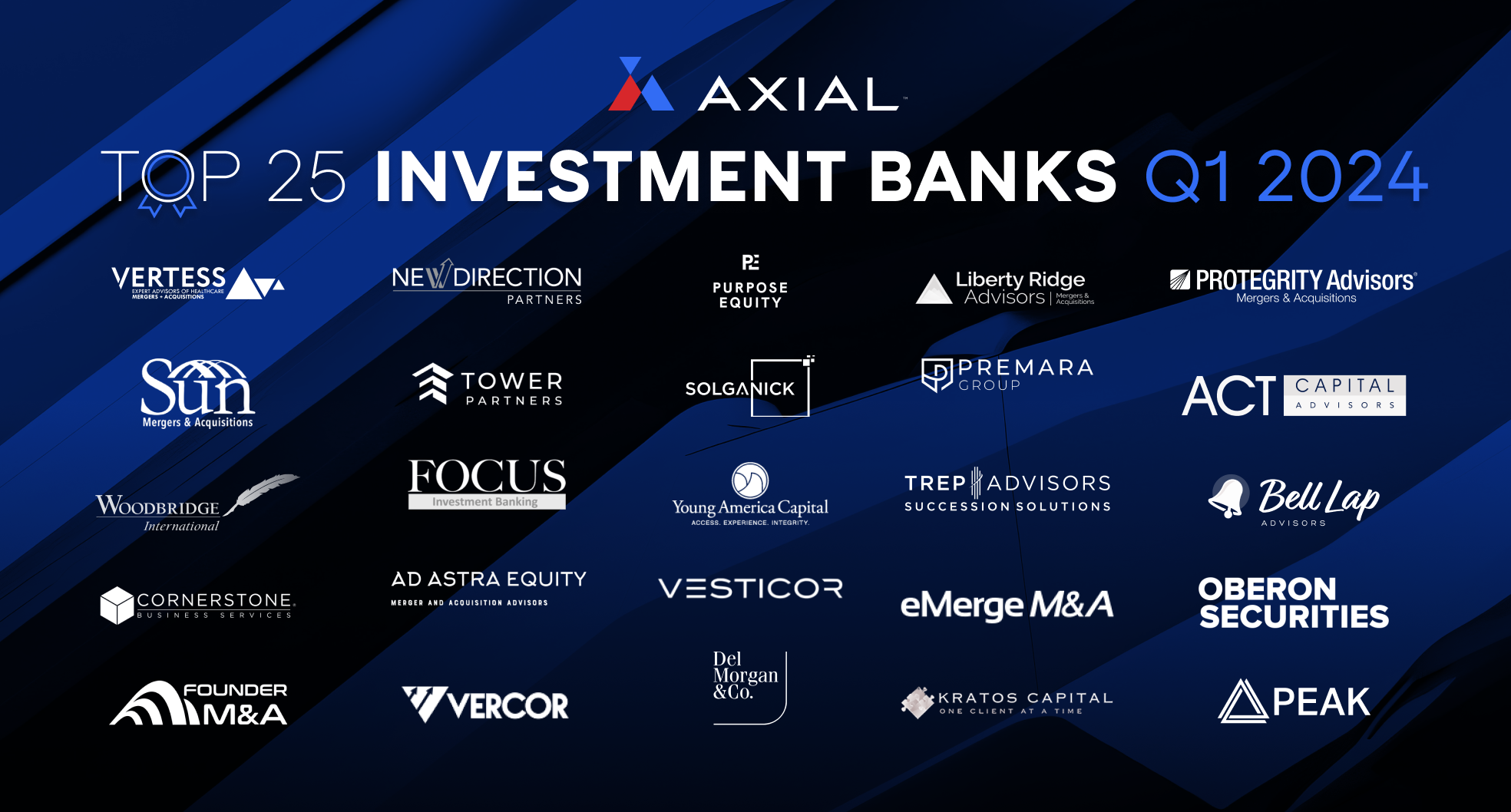
Top 25 Lower Middle Market Investment Banks | Q1 2024
Axial is excited to release our Q1 2024 Lower Middle Market Investment Banking League Tables. To assemble this list, we…
Technology has made a lot of things easier for deal professionals. Information about potential buyers and sellers is available with the click of a button. Deal networks like Axial allow buyers to find and pursue deals across geographies and from under-the-radar sources that they might never have had access before.
But an overreliance on technology can sometimes slow down or muddle the deal process, argues investment banker and former private equity investor Robert Rough of Dallas-based Telos Capital Advisors.
“At the risk of sounding like an old curmudgeon (which I probably am), a case can be made that technology is increasing the amount of time it takes to get an M&A transaction closed and may even reduce the probability of closing or of a successful investment,” Rough writes in a recent blog post on his firm’s website. Even when technology shortens the time period, he maintains it can be difficult to create the same rapport and level of understanding between buyer and seller when most of the communication is done over email.
Technology’s capabilities result in perhaps unnecessary time-sucks, for example endless permutations of data based on PE groups’ requests and constant updates to trailing twelve-month revenue, Rough says. And while no one can argue with the convenience of virtual data rooms, using them without ever meeting the other side in person makes it difficult to glean context and cultural insight on both sides. Negotiating through email instead of in-person can result in misunderstandings and lots of messages with no real dialogue.
We talked to Rough about the old vs. new way of doing deals, and what he sees moving forward.
MMR: You were in private equity in the 1990s. Tell me about some of the biggest differences in how deals were done then versus now.
Obviously we didn’t have search engines to the extent we do today. There wasn’t this amazing treasure trove of data on the internet so we relied on hard copies of the pitch books to give us information about the company.
But I think the biggest difference is when you decided you had an interest in the company. You might have a call with the banker or with the company, but pretty soon you just ran out of places to go for information.
Now, it’s so easy to produce data that you can just keep asking for different numbers. Deal people tend to be data junkies.
Then, there was only so much information available. The systems were not as flexible as they are today. The reports that came out were the only way the data could be presented so you had to make do with them. At some point you just had to say, “OK, we’re interested in what we know so far. We’ll come visit you.” Sometimes I think asking for more data is used as a crutch to push off having to make a decision.
And that meant that you ended up talking to them and using that conversation to really try to understand their industry and their place in it. Without Google, you had to do a lot more thinking, more time talking with the management team.
MMR: How did traveling to a physical data room change the process?
Sometimes, you’d have an accountant or a lawyer with you, but a lot of it was you looking through the documents yourself. It gave you such a different sense of the business and you spent a lot more time with the management group. The CEO or CFO or someone from the business would be available for large chunks of time to answer questions and you’d get together for meals.
Now, the time spent is spent by analysts and attorneys logging into VDRs. Decisions are data driven with not enough focus on the relationship side of the equation. We just represented a company being sold to a global Fortune 200 company, and they had 11 outside attorneys working on the deal. One of the attorneys logged into the data room over 50 times in the course of six or seven or eight weeks. Instead of a buyer asking questions to the management team, the buyer’s attorney logged something like 120 questions into a deal-tracking software and the questions and answers were emailed back and forth. Neither us, nor our client, nor our attorney ever met anyone from the other side face-to-face. The deal ended up closing, so all’s well that ends well, but there were more than a few misunderstandings that resulted from this extensive email communication. I can’t help but think that the process would have been faster and more straightforward if there had been an in-person meeting at some point in that process.
MMR: Do you think that others are recognizing the gaps in technology’s ability to streamline the deal process?
I don’t know. The younger people are, the less they seem to value the face-to-face interaction. I value the face to face, but I’m still comfortable emailing somebody — whereas the generation ahead of me wants to pick up the phone immediately and go see them, and the generation after me doesn’t want to meet people at all. There are times the face-to-face probably isn’t necessary. But we’ve got to remember that particularly in private equity, they are rarely buying 100% of a company. It’s a partnership. I’m not sure I’d want to sell 70% of my business and agree to partner up with somebody I’d spent little to no time with during the deal process.
